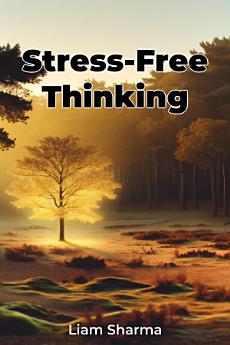Stress-Free Thinking
About this ebook
The book progresses from explaining stress biology (like how non-threatening deadlines trigger the amygdala’s fight-or-flight response) to actionable strategies. Readers learn techniques such as the “5-4-3-2-1” grounding method to halt panic spirals and heart-rate variability breathing to reduce cortisol spikes. Notably, it cites studies showing a 37% drop in perceived stress through cognitive reframing and a 26% cortisol reduction via workplace micro-breaks. Rather than just promoting relaxation, it emphasizes building “attentional control” to observe stressful thoughts without being overwhelmed.
Structured in three parts, Stress-Free Thinking moves from theory to sustainable habit-building. Lab sessions and relatable anecdotes—like a teacher using breath techniques between classes—make complex concepts accessible. By addressing debates (e.g., mindfulness critiques) and systemic stressors, it balances individual tools with nuanced realism. For time-strapped adults seeking science-backed, bite-sized strategies, this book transforms stress management from a vague ideal into a trainable skill.







